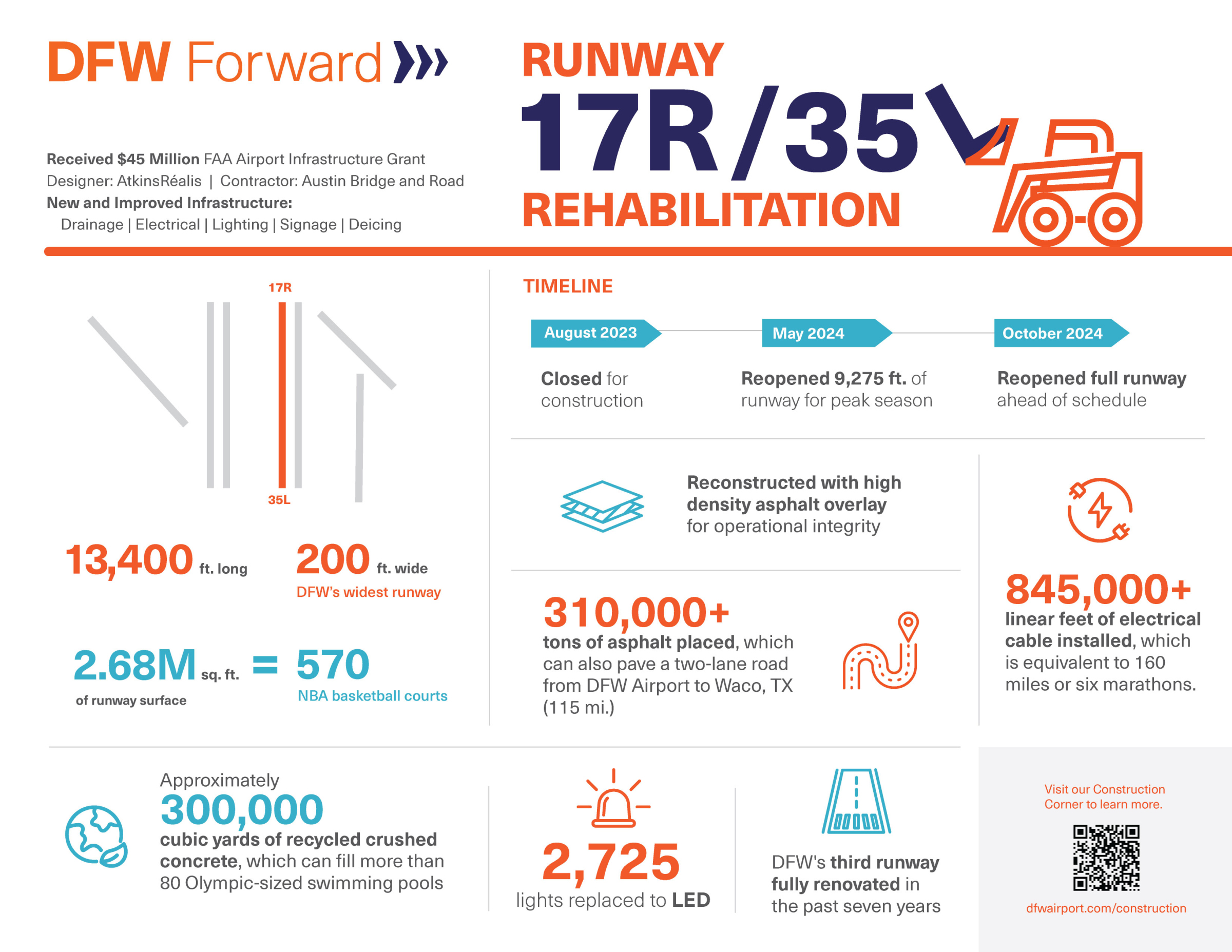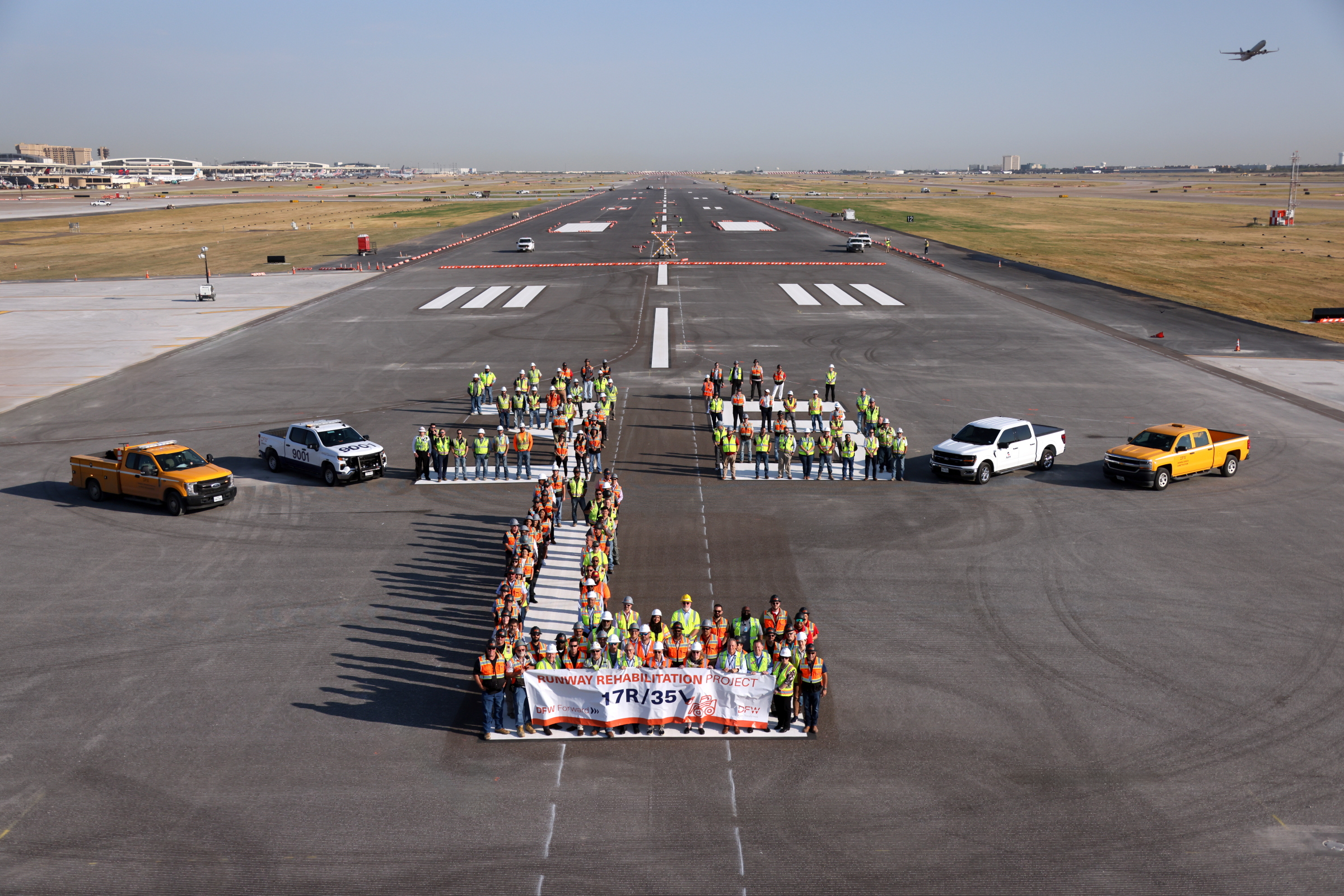Dallas Fort Worth International Airport (DFW) celebrates the successful, ahead-of-schedule completion of a major rehabilitation project on Runway 17R/35L, one of its largest runways.
Thanks to an innovative, phased approach, the runway partially reopened in May with a shortened configuration. This allowed airlines to utilize the runway during the busy summer travel season while construction continued on the full length. This innovative strategy was a collaborative success between DFW, the Federal Aviation Administration, and American Airlines.

The massive undertaking involved a complete reconstruction of the 13,400-foot-long, 200-foot-wide runway. Over 350,000 work hours were completed safely, with no accidents reported. The project included a high-density asphalt overlay, improved drainage, upgraded lighting and signage, and enhanced deicing capabilities.
Sustainability was also a key focus. Over 2,700 runway lights were converted to energy-efficient LEDs, and more than 300,000 cubic yards of reclaimed concrete were recycled for reuse in the runway project and other DFW construction initiatives.
“This project marks a significant milestone for DFW,” said Mohamed Charkas, Executive Vice President of Infrastructure and Development. “Completing the largest runway rehabilitation in our history ahead of schedule and with a perfect safety record is a testament to our commitment to efficiency and safety. This accomplishment reflects the dedication of our partners, and ensures a vital runway is back in service before the winter season.”
Funding for the project included a $45 million Airport Infrastructure Grant from the U.S. Department of Transportation’s Federal Aviation Administration under the Bipartisan Infrastructure Law. Austin Bridge and Road completed the construction, with design by AtkinsRéalis.
DFW in Motion: A Look Ahead
The runway rehabilitation is part of DFW Forward, the airport’s historic $9 billion capital improvement plan. This ambitious initiative includes major upgrades, expansions, and new facilities across the airfield, terminals, and roadways. To learn more about DFW’s ongoing transformation, visit dfwairport.com/construction.

